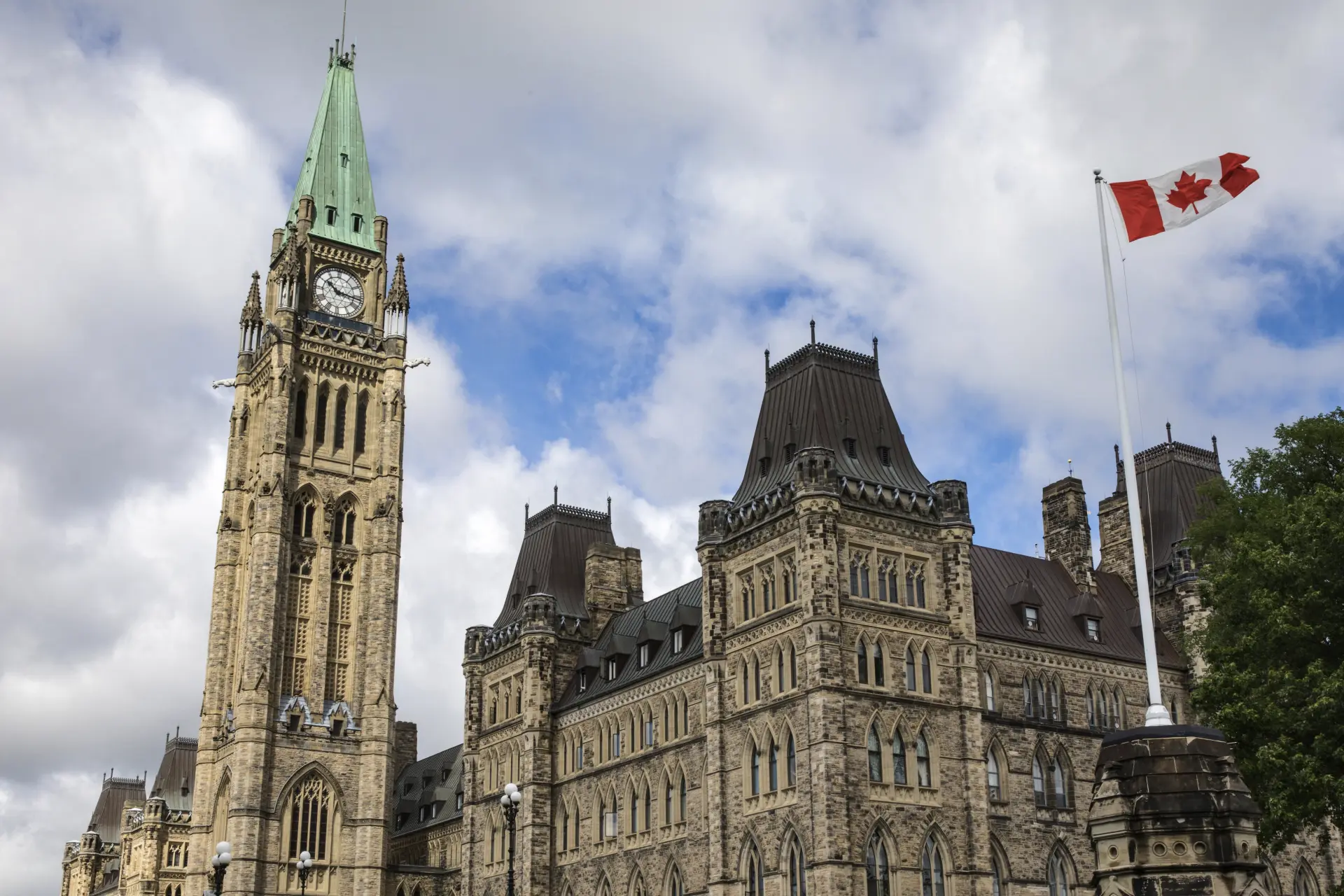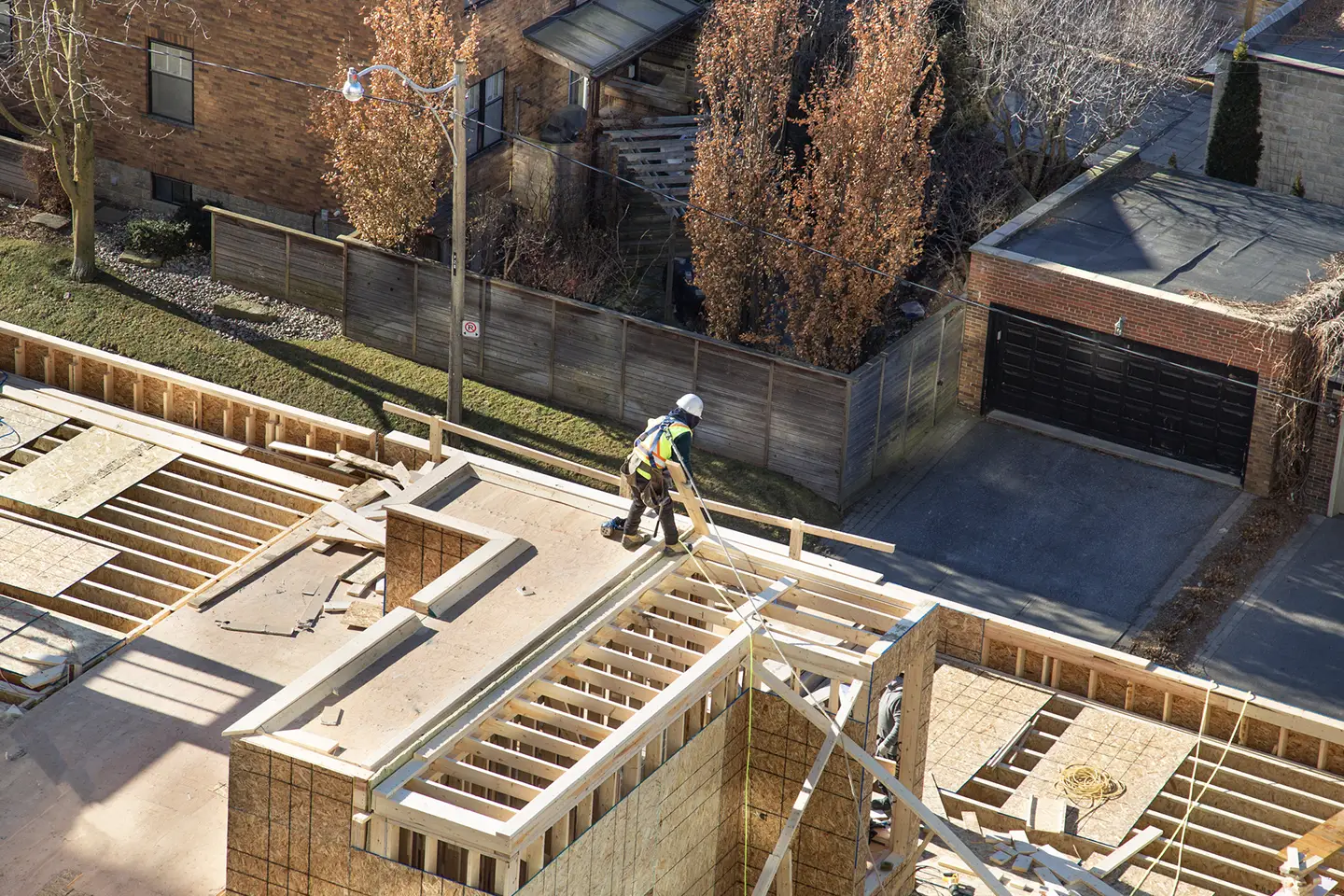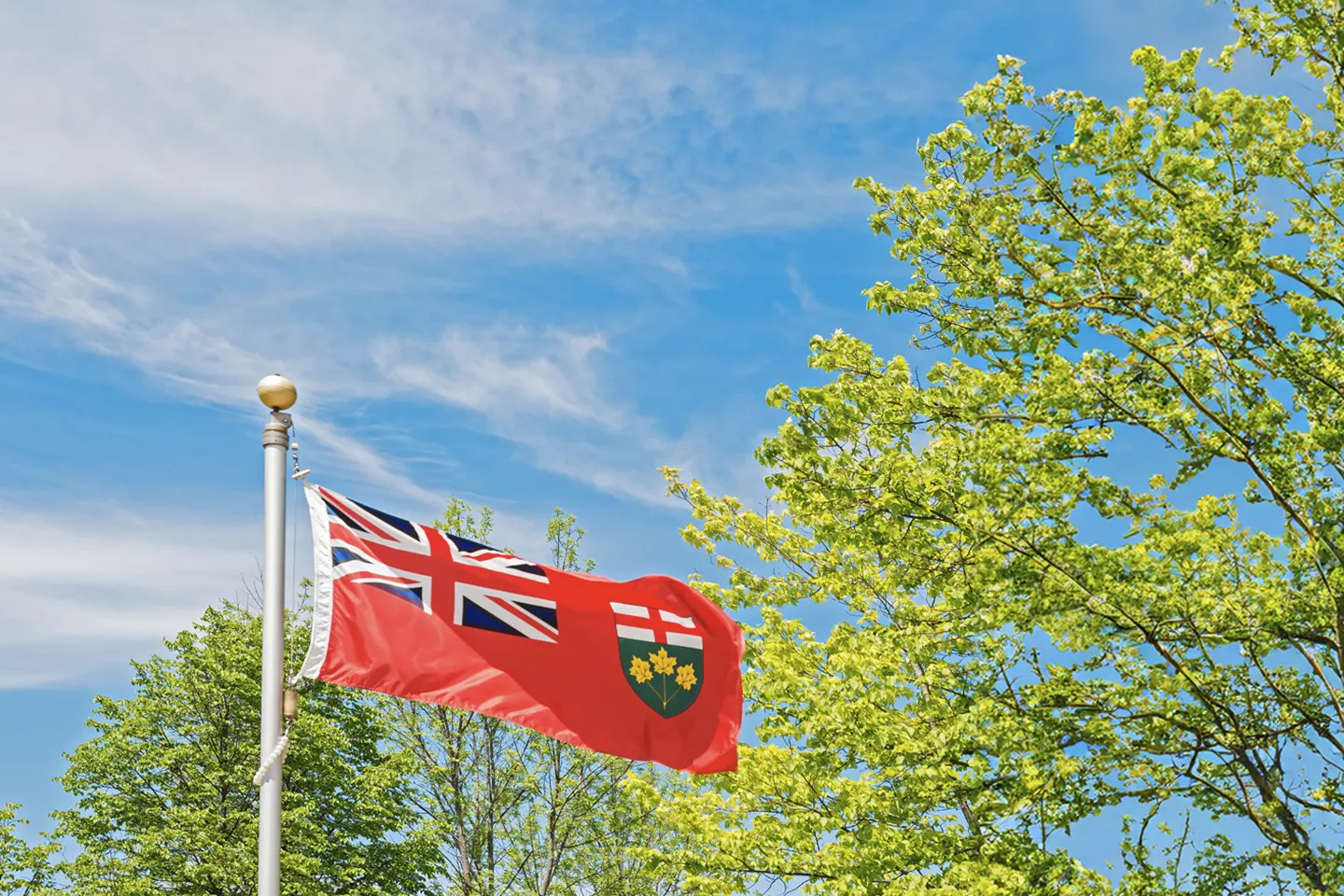Liberals Launch Platform, Seek to Regain Incumbent Advantage

With 19 days remaining until election day on Monday, September 20th, and faced with the prospect of losing government to a Conservative Party that has seen its numbers steadily rise into a statistical dead heat, the Liberal Party officially released its full platform today - “Forward. For Everyone”. The document runs 86 pages and promises $78 billion dollars in new spending. Despite being the last of the three major parties to release its formal platform, the Liberals are the first to include a full costing of the included measures by the Parliamentary Budget Officer. Though many of its large-scale promises on energy, health care, child care and housing affordability had been already made in daily announcements leading up to the release - including the pledge to achieve a net-zero electricity grid by 2035 - the document contains a substantial amount of new commitments.
For your benefit and consideration here are some key highlights from the Liberal Platform release.
Costing, Budget and Taxation Measures
The platform proposes several new revenue-seeking measures to aid in paying for the vast array of programs and investments outlined. First, the platform proposes a minimum 15% tax on high earners so that deductions and tax credits can’t reduce their tax obligations below that threshold. That would be in addition to a 3% surtax on banks and insurance companies with profits over $1-billion and a temporary recovery dividend on those same firms.
The platform also reiterates the pledge on the implementation of a tax on luxury cars, boats, and planes as outlined in Budget 2021.
If re-elected, the Liberals will significantly increase the resources of the Canada Revenue Agency to combat aggressive tax planning and tax avoidance that allows the wealthiest to avoid paying the taxes they owe. This will increase CRA’s tax collection by up to $1 billion per year in order to close Canada’s tax gap.
Infrastructure
By-and-large on the infrastructure front, the Liberal commitment is to stay the course concerning committed investments. Since the outbreak of the pandemic, the Liberals have pledged over $50 billion in infrastructure dollars, including $14.9 for steady, predictable transit dollars.
Over and above their ongoing economic stimulus plan, the Liberals made the following new pledges concerning infrastructure:
- Create open-access climate toolkits to help infrastructure owners and investors develop projects that ensure Canada is on the path to a net-zero emissions and resilient future.
- Invest an additional $200 million in the Natural Infrastructure Fund to continue funding community led public green space projects in collaboration with municipalities, Indigenous communities, and nonprofit organizations.
- Create a new $100 million infrastructure and innovation fund over the next 5 years that will scaleup and commercialize made-in-Canada technologies and solutions for the reuse and recycling of plastics.
Workforce
The platform commits to:
- Re-establishing the Sectoral Workforce Solutions Program, pledged via Budget 2021, which would see an investment of $960 million over three years to help retrain and reskill people in various sectors rapidly growing sectors, including construction, clean energy, and healthcare fill positions in high-demand.
- Making it easier for women and vulnerable groups to access training by requiring businesses supported through the Sectoral Workforce Solutions Program to include wrap-around supports. This could include transportation to and from the training program, computers, food, referral to counselling, housing, and legal support, support in finding child care, and mentoring or coaching.
- Introduce a Career Extension Tax Credit to help seniors who want to stay in the workforce to do just that. The tax credit will let people 65 and over, who earn a working income, reduce their taxes. Seniors who earn a minimum of $5,000 at their jobs will be able to eliminate tax payable on a portion of their income and receive a tax credit of up to $1,650.
- Seizing on a long-standing debate with the NDP at the height of COVID in the last Parliament that was largely the jurisdiction of the provinces, the Liberals pledge to introduce amendments to the Canada Labour Code to provide 10 days of paid sick leave for all federally regulated workers so that no one has to choose between going to work sick or paying their bills.
Housing Affordability
Rent-to-own program
- Introduce a new rent-to-own program to help make it easier for renters to get on the path towards home ownership while renting.
- Create a stream for current renters and landlords, particularly those in condo settings, to immediately enter into a rent-to-own agreement.
- Commit $1 billion in loans and grants to develop and scale up rent-to-own projects with private, not-for profit, and co-op partners.
A new tax-free First Home Savings Account
- Introduce a tax-free First Home Savings Account will allow Canadians under 40 to save up to $40,000 towards their first home, and to withdraw it tax-free to put towards their first home purchase, with no requirement to repay it.
Reducing closing costs for first time buyers
- Double the First-Time Home Buyers Tax Credit, from $5,000 to $10,000.
Reduce monthly mortgage costs
- Reduce the price charged by the Canadian Mortgage and Housing Corporation on mortgage insurance by 25%. For a typical homebuyer, this will save $6,100.
- Increase the insured mortgage cut-off from $1 million to $1.25 million, and index this to inflation, to better reflect today's home prices.
1.4 million new homes
- Invest $4 billion in a new Housing Accelerator Fund which will grow the annual housing supply in the country’s largest cities every year, creating a target of 100,000 new middle-class homes by 2024-25.
- Permanently increase funding to the National Housing Co-investment fund by a total of $2.7 billion over 4 years, more than double its current allocation.
Home buyers’ bill of rights
Similar to the Air Passenger Bill of Rights and Protections passed in 2018 during the Liberals’ first term, they seek to seize on discontent and fluctuation within the housing market with a newly minted “Home Buyers’ Bill of Rights” which would contain the following provisions:
- Ban blind bidding, which prevents bidders from knowing the bids of other prospective buyers, and ultimately drives up home prices.
- Establish a legal right to a home inspection.
- Ensure total transparency on the history of recent house sale prices on title searches.
- Require real-estate agents to disclose when they are involved in both sides of a potential sale to all participants in a transaction.
- Move forward with a publicly accessible beneficial ownership registry.
- Ensure banks and lenders offer mortgage deferrals for up to 6 months in the event of job loss or other major life event.
- Require mortgage lenders act in the buyers’ best interest so that you are fully informed of the full range of choices at the buyers’ disposal, including the First Time Home Buyer Incentive.
Energy and Environment
The Liberals released most of the Clean Energy section of their platform at an announcement on Sunday though the event was largely overshadowed by protest from anti-vaccination groups. When released today in the full platform it added a few additional pieces on phasing out subsidies in the oil and gas industry, some highlights include:
Electrification:
- A fleshed out Clean Electricity Standard that commits to a net-zero electricity grid by 2035 via the use of clean energy tax credits and the creation of a Pan-Canadian Grid Council.
- Develop additional investment tax credits for a range of renewable energy and battery storage solutions, to accelerate the deployment of clean energy.
- Create a Pan-Canadian Grid Council to promote infrastructure investments, smart grids, grid integration, and electricity sector innovation.
Transition from high-emitting fossil fuels
- A $2 Billion “Futures Fund” aimed at transitioning those in resource intensive industries in Alberta, Saskatchewan and Newfoundland into new jobs (industry input will be sought).
- Ensure that the oil and gas sector reduces emissions at a pace and scale needed to achieve net-zero by 2050, with 5-year targets to stay on track to achieving this shared goal. And driving down pollution starts with ensuring that pollution from the oil and gas sector doesn’t go up from current levels.
- Require oil and gas companies to reduce methane emissions by at least 75% below 2012 levels by 2030 and work to reduce methane emissions across the broader economy.
Retrofits
- Retrofit grant program of up to $5,000 with $40,000 interest free loans available for deeper retrofits for transitioning off home heating oil (previously committed).
- National strategy on net zero emission buildings by 2050 with “ambitious” milestones along the way.
- Accelerate the development of the national net-zero emissions model building code for 2025 adoption.
- Accelerate the transition from fossil fuel-based heating systems to electrification through incentives and standards, including investing $250 million to help low-income Canadians get off home-heating oil.
- Require EnerGuide labeling of homes at the time of sale.
- Launch a community-led net-zero homes initiative that supports projects that pursue multiple concurrent retrofits in a community or neighbourhood, to reduce overall costs. This initiative will be modeled on the Dutch “Energiesprong” program
Electric vehicles
- Introducing an interim electric vehicle mandate, which will require half of all cars sold in Canada to be zero-emission by 2030, ahead of the final mandated target of 100 per cent by 2035.
- Invest an additional $1.5 billion in the iZev rebate program and broaden eligibility to a wider range of vehicle types, including used vehicles, to help over 500,000 Canadians get into a zero emissions vehicle.
- Invest an additional $700 million to add 50,000 new electric vehicle chargers and hydrogen stations to Canada’s network.
- Work with industry, labour, and other stakeholders to develop a regulated sales requirement that at least 50% of all new light duty vehicle sales be zero emissions vehicles in 2030.
- Provide $100 million to make sure existing buildings can install charging stations, removing a barrier to adopting a clean car.
Critical minerals and EV battery supply chain
- Build an end-to-end, sustainable battery supply chain.
- Work to attract near-term multi-billion anchor investments in key areas like minerals processing and cell manufacturing.
- Double the Mineral Exploration Tax Credit for materials on the Canadian list of critical minerals which are essential to the manufacturing of vital clean technologies, such as batteries.
- Establish Canada as a global leader in battery recycling and reuse, to improve the environmental impact and build a competitive advantage.
Others on the climate file
- Advance green industrial strategies and continue investing funds from the Net Zero Accelerator in strategic opportunities and make sure that Canada claims more than our fair share of growing clean growth opportunities.
- Introduce a new Buy Clean Strategy to support and prioritize the use of made-in-Canada low-carbon products in public and private infrastructure projects.
- Issue green bonds, annually, worth a minimum of $5 billion.
- Move forward, in collaboration with key trading partners like the United States and the European Union, on applying Border Carbon Adjustments to imports from countries whose electric grids continue to generate high volume of emissions. This includes considering applying Border Carbon Adjustments on imports of steel, cement, aluminum, and other emissions-intensive industries, similar to the European Union’s approach.
Healthcare
Like the other two major parties, the Liberals center much of their healthcare policy around the need to fill in discrepancies and shortfalls highlighted by the pandemic. One of the top line items is a $6.5 billion National Mental Health Strategy in coordination with the provinces. Additional measures include:
- As announced at a campaign stop last week in Nova Scotia, $3.2 billion will be provided to the provinces and territories for the hiring of 7,500 new family doctors, nurses and nurse practitioners.
- $400 million over 4 years to build on the growing demand for virtual care that arose during the pandemic.
- On long-term care, the platform seeks to raise wages for personal support workers, including a guaranteed minimum wage of at least $25 per hour and pledges to train up to 50,000 new personal support workers.
- In tackling the ongoing opioid crisis, the Liberals would seek to invest $500 million to support the provinces and territories in providing access to a full-range of “evidence-based treatment” as well as $25 million for public education efforts and the creation of substance treatment standards.
Defence and National Security
Seeking to build on the framework laid out in the 2017 “Strong, Secure, Engaged” strategy for National Defence, the Liberal platform proposes a series of upgrades and recruitment measures, though no dollar figures are attached in the text. Also, in the wake of a series of misconduct scandals racking the top levels of the military command, it commits to increasing oversight and independence for reporting as well as updating the military justice system.
- Citing renewed cooperation with the United States, the platform affirms to modernize NORAD and upgrade the North Warning System.
- Implement the recommendations of the Independent External Comprehensive Review led by Justice Louise Arbour to address sexual harassment and misconduct in the Canadian Armed Forces, including instituting external oversight and independence over the processes of reporting, investigating, and adjudicating complaints, outside of the chain of command.
- Modernize the military justice system and ensure survivors are treated with respect and have the full range of options and services available in the civilian system, including implementing recommendations from the Third Independent Review of the National Defence Act led by Justice Morris Fish.
- On supports for Canadian Veterans, the platform promises three comprehensive programs: a pilot program to provide rent supplements to homeless veterans; a specific stream created within the Rapid Homeless Initiative; and the launch of a National Veteran Employment Strategy.
Indigenous Reconciliation
- Similar to the Conservative platform, the document pledges to work with Indigenous partners to co-develop an Urban, Rural, and Northern Indigenous Housing Strategy and support this strategy with a dedicated stream of investments.
- Proposes to work with Indigenous partners to create a National Indigenous Housing Centre with Indigenous people overseeing federal Indigenous housing programs once fully realized.
- Seeks to make additional investments in First Nations, Inuit, and Métis Nation housing.
- Commit an additional $1.4 billion for a distinctions-based mental health and wellness strategy with First Nations, Inuit, and the Métis Nation, expanding on the recent commitment of $597.6 million, for a total investment of $2 billion over five years.
- Provide the necessary supports for communities who wish to continue to undertake the work of burial searches at the former sites of these institutions.
- Commits to move forward on building a specific Indigenous Early Learning and Child Care system for Indigenous families, regardless of geography. Pledges to create 3,300 new spaces.
Innovation
The Liberal platform reaffirms existing commitments in the innovation policy space, such as the Strategic Innovation Fund and the Net Zero Accelerator, as well investments in initiatives such as the development of a National Quantum Strategy, the development of a National Research Council Canadian Photonics Fabrication and a Pan-Canadian Artificial Intelligence Strategy. In addition, it pledges a number of initiatives, including the following:
- Establish a Canada Advanced Research Projects Agency (CARPA), modelled on the Defense Advanced Research Projects (DARPA) in the United States, as a public-private bridge for research that helps develop and maintain Canadian led technology and capabilities in high-impact areas—with an initial endowment of $2 billion.
- Establish a $75 million per year fund for colleges and universities to help commercialize leading research, including identifying and securing patent rights for research done within their institutions and connecting researchers with people and businesses to help put these innovations into action and grow our economy.
- Reform the Scientific Research and Experimental Development Program to “reduce red tape and better align eligible expenses to today’s innovation and R&D” and increase the overall tax incentive provided to eligible companies.
- Add 1,000 Canada Research Chairs, with a focus on improving gender and racial equity among Canadian faculty.
- Create a Low-Carbon Building Materials Innovation Hub to work directly with entrepreneurs, municipalities, provinces and territories, and Indigenous governments to ensure Canadian innovations are best positioned to succeed.
Other Programs of Note
- The Platform reaffirms the Government’s core plank of $10-a-day childcare and that it has signed agreements with 8 provinces to date.
- The platform also includes a promise to permanently end interest payments on federal student loans, introduce a new stand-alone national financial crimes agency, and add or extend tax credits for teachers, people who work at home and seniors who want to keep working after they turn 65.
- In contrast to the Conservative platform’s pledge to review the mandate of CBC English television, News Network and online, the Liberal platform promises to fund the national broadcaster to the tune of $400 million over four years to boost the footprint and resources of local stations as well as to make national news broadcasts and public affairs shows ad-free.
- In a model presumably similar to the Clean Growth Hub under Innovation, Science and Economic Development, the Liberals would create “a new federal hub” aimed to help Canadian businesses and entrepreneurs take full advantage and of the opportunities created by CUSMA, CETA, CPTPP, and other trade agreements.
Analysis
The Liberals were admonished in the media and by stakeholder groups for delaying the release of the platform despite being the sole party with the power to control the timing of the election. There is a sense that doing so allowed the Conservatives and NDP to make up considerable ground and control messaging in the campaign’s first two weeks. The Liberals seem to have used at least some of that time to develop counter-messaging to some of their opponents’ pledges on things like affordable housing, reconciliation, and environmental issues.
Perhaps sensing electoral mortality and seeking to shore up key constituencies, there are a significant number of measures that provide funding to what are traditionally provincial areas of jurisdiction such as large investments in mental health, paid sick days, doctor recruitment and tax credits for teachers on school supplies.
The release of the platform signals the beginning of what the Liberals hope can be a comeback after losing 10+ points since the drop of the writ. The Liberals will seek to build off of today’s platform release by honing their message on the hustings over the next week. On September 8th and 9th Prime Minister Trudeau will take that message to Canadians during the principal debates of this campaign. Whether the Liberals have put enough new ideas and measures on the table to assure Canadians there is more in the tank to re-build the economy post-COVID will bear out in the coming days as we now close on the opening period of the race.
Happy to help.
The Sussex federal government relations team has been analyzing and monitoring the rollout of all major campaign platforms for the parties currently recognized by the House of Commons as well as daily developments on the campaign trail. We will be following up next week with analysis from the two national debates being held on September 8th in French and 9th in English. If you have any questions on the Liberal platform or any other aspect of the federal election please reach out to your Sussex point of contact.
Chris Benedetti, Managing Partner
cbenedetti@sussex-strategy.com
Devin McCarthy, Senior Vice President & Federal Practice Lead
dmccarthy@sussex-strategy.com
Paul Pellegrini, Executive Chairman
ppellegrini@sussex-strategy.com
Brett James, Senior Counsel
bjames@sussex-strategy.com
Liam Daly, Senior Associate
lday@sussex-strategy.com
Roberto Chavez, Associate
rchavez@sussex-strategy.com


